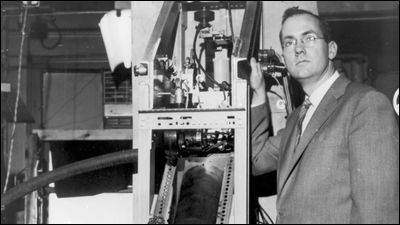Blog that the creator of the familiar 'ping' command wrote the secret story of development more than 20 years ago

The '
The Story of the PING Program
https://ftp.arl.army.mil/~mike/ping.html
The blog Moose is talking about the ping command is stored on the FTP server ``ftp.arl.army.mil'' of the US Army Research Institute , and can be viewed even in 2020, 20 years after Mr. Moose's accident death Can. Since it is a blog 20 years ago, it has a simple design with no decoration.

Ping is a command that uses
[code]PING vapor.arl.army.mil (128.63.240.80): 56 data bytes
64 bytes from 128.63.240.80: icmp_seq=0 time=16 ms
64 bytes from 128.63.240.80: icmp_seq=1 time=9 ms
64 bytes from 128.63.240.80: icmp_seq=2 time=9 ms
64 bytes from 128.63.240.80: icmp_seq=3 time=8 ms
64 bytes from 128.63.240.80: icmp_seq=4 time=8 ms
^C
----vapor.arl.army.mil PING Statistics----
5 packets transmitted, 5 packets received, 0% packet loss
round-trip (ms) min/avg/max = 8/10/16[/code]
Mr. Moose developed the ping command by measuring the communication delay due to the ICMP packet announced by David L. Mills at the Defense Advanced Research Projects Conference held in Norway in July 1983. It was a system called 'Fuzzball'.
Moose wrote a quick ping command using the AF_INET socket for 4.2a BSD UNIX , but the UNIX kernel at the time did not directly support ICMP packets. Moose seems to have been able to run the program safely by adding support so that the UNIX kernel can handle ICMP packets directly. “If I knew the ping program would be the most famous achievement of my life, I might have spent a few days adding a few more options,” Moose said.

The University of California, Berkeley , the developer of BSD UNIX, was willing to adopt the ping command and kernel changes by Mr. Moose, and has since become a standard feature of BSD UNIX. The ping command was free, and will be ported to other systems, including Microsoft's Windows 95 and Windows NT.
Moose was very jealous when Van Jacobson developed the traceroute command, which added a TTL to each ICMP packet to list the routers on the route. 'I wish I could come up with that method,' Moose said.
Ten years after developing the ping command, Mr. Moose has been awarded a Distinguished Service Award by the USENIX Society for deep intellectual achievement and service to the community.
Related Posts:
in Software, Posted by darkhorse_log







